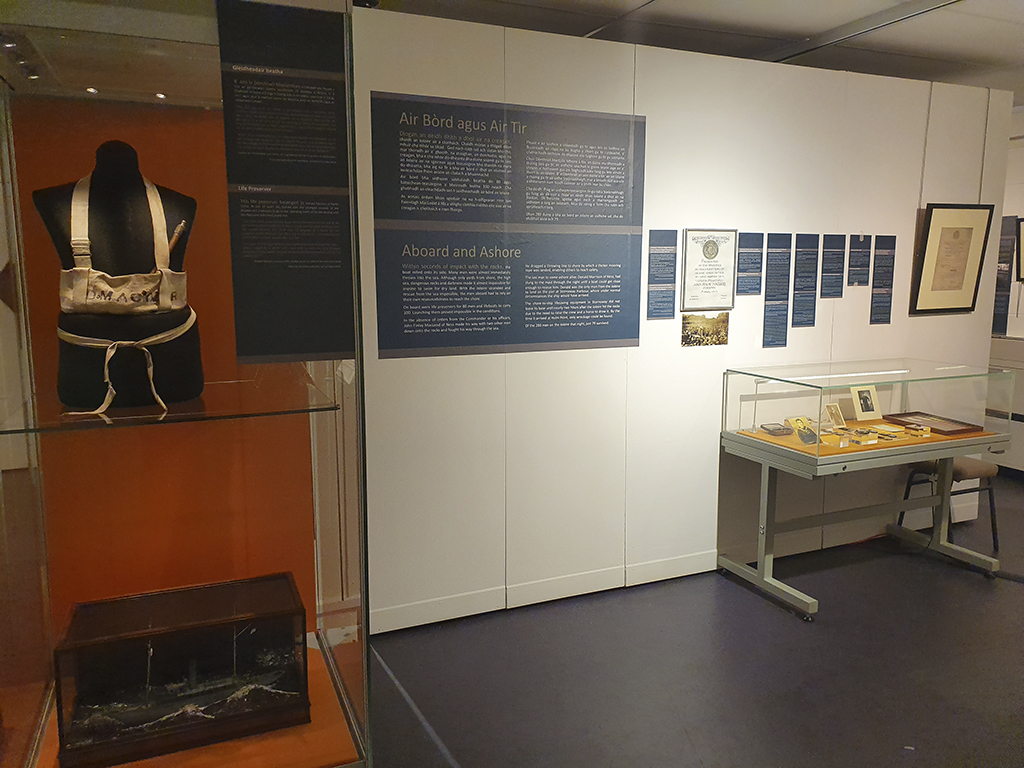An exhibition of remembrance to mark Britain’s worst peacetime disaster at sea is continuing throughout January.
Running until February 1 at Museum nan Eilean in Benbecula, it ensures that the memory of HMY Iolaire is never forgotten.
It sank on the approach to Stornoway Harbour on 1 January 1919, with the loss of 201 Islanders returning home following the end of World War One. Of those known to have died, 174 came from Lewis with seven Harrismen amongst the dead. A further 18 crew and two passengers on their way to the Stornoway Naval Base were killed.
The men, mostly naval reserves, made it to Armistice but drowned within a short reach of their families who had gathered on Stornoway Pier to greet them.

The Iolaire exhibition
On display are several Iolaire related artefacts , including a lifebelt from the tragedy, which belonged to Donald MacIver, the youngest survivor; a brass bell and engine plate from the wreck; a flaregun that was found by divers to the wreck; a watch that belonged to Malcolm MacLeod who perished on the wreck; a Royal Naval Reserve Uniform; and a selection of medal from survivors and those who lost their lives.
On January 1, Prince Charles attended the commemoration to mark a century since the loss of HMY Iolaire. He delivered a scripture reading and lay a wreath. After the service, he unveiled a new sculpture, created to mark the centenary of the tragedy.
Organised by WW100 Scotland in conjunction with Comhairle nan Eilean Siar (Western Isles Council), the National Commemorative Service took place at the Iolaire Memorial in Stornoway on January 1 2019.
It was attended by hundreds of local people including Iolaire descendants; First Minister Nicola Sturgeon; Scotland’s most senior naval officer Rear Admiral John Weale and convener of Comhairle nan Eilean Siar (Western Isles Council), Norman A Macdonald, each of whom laid a wreath.
TAGS

